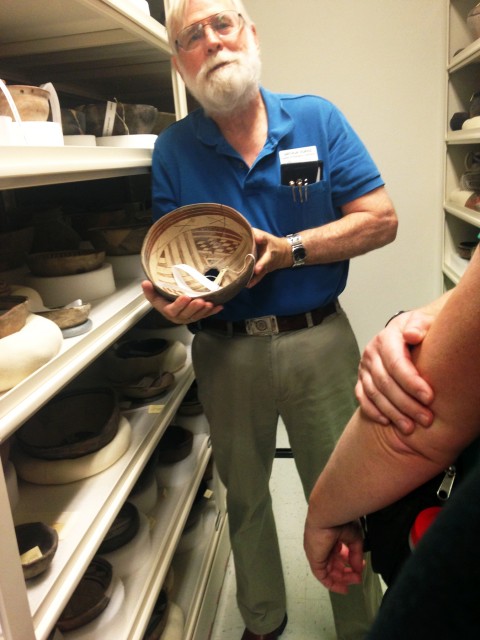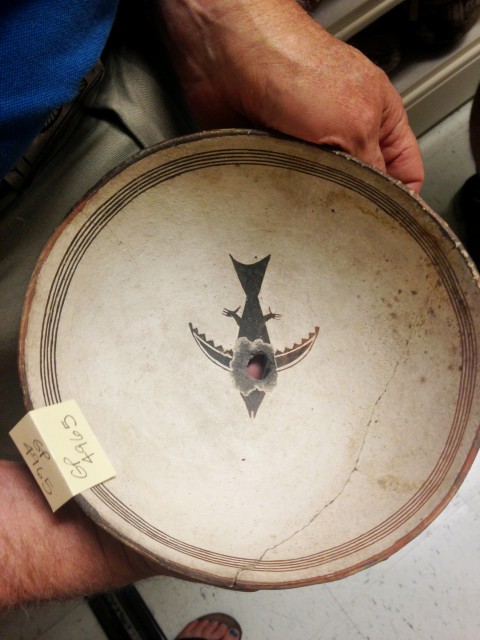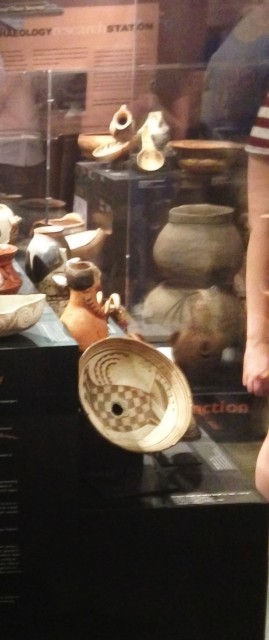- Home
- >
- Preservation Archaeology Blog
- >
- Investigating Kill Holes
Carolyn Barton, University of South Florida
(July 4, 2016)—Nearly every budding archaeologist looks for a research area that captivates them; some immediately know what they want to specialize in. For me, that was far from the reality when I came to this field school. Every aspect of archaeology seemed to fascinate me, making me want to do it all. Was I a lithics person, or was ceramics my calling? What about fauna, bioarchaeology, or macrobotany? The options seemed endless. How was I supposed to choose? The act of narrowing it down seemed like quite a hard task to me. Luckily, this dilemma seemed to resolve itself pretty quickly once I arrived. At nearly every museum we visited, I found myself mesmerized by the pottery of the Southwest.
It was our visit to the Arizona State Museum that really sealed the deal for me, though. During the visit, we were taken to their ceramic repository, the “pottery vault.” The collection of painted Mimbres bowls that Arthur Vokes showed us that really caught my attention. Many of these bowls had circular holes at the center of them. Often these holes went right through a painted figure of an animal or geometric design. Sometimes the holes were the only broken part of the bowls. Vokes called them kill holes. These “kill holes” were purposely made, something that immediately piqued my interest.

Why would people purposely destroy something they put time and effort into? I wanted to learn all I could about kill holes after seeing them. Ask anyone I’ve spent these past four weeks with, and they’ll probably tell you how tired they are of me mentioning them. Unsurprisingly, I am even doing my course outreach fair project on them.
My research on kill holes has reinforced to me just how much ceramics or other art can reveal about a culture. Ideologies can be examined by researching the stories some of the designs may tell. Connections people may have had with each other through trade or travel can be revealed by looking at where certain types of pottery end up. Studying ancient pottery has also helped me refine my future research interests in archaeology, and I would like to continue my research on kill holes and ceramics even after this field season is done.
|
|
2 thoughts on “Investigating Kill Holes”
Comments are closed.


I have written quite a bit about “killl’ holes in Mimbres bowls and the overall context. The act is not just Mimbres either, the Maya did it as well in a masking bowl over the face of the dead. Freel free to contact me.
Greetings,
I have a couple of questions. Are there any other known artifact that accompany the Mollogon pierced pottery that survive? Textiles? Beads? Carved objects?
Also, given the association with the bowls and burials, have any of the bowls been found directly in contact with human remains? If so, what is the protocol for handling the remains? I am currently researching textiles association with the Wari Kayan necropolis in Peru. I am curious about how various ritual burials get exhumed in archeological work, and how the original intentions of the burial are subverted or changed by archeology.
I think it is something to discuss.